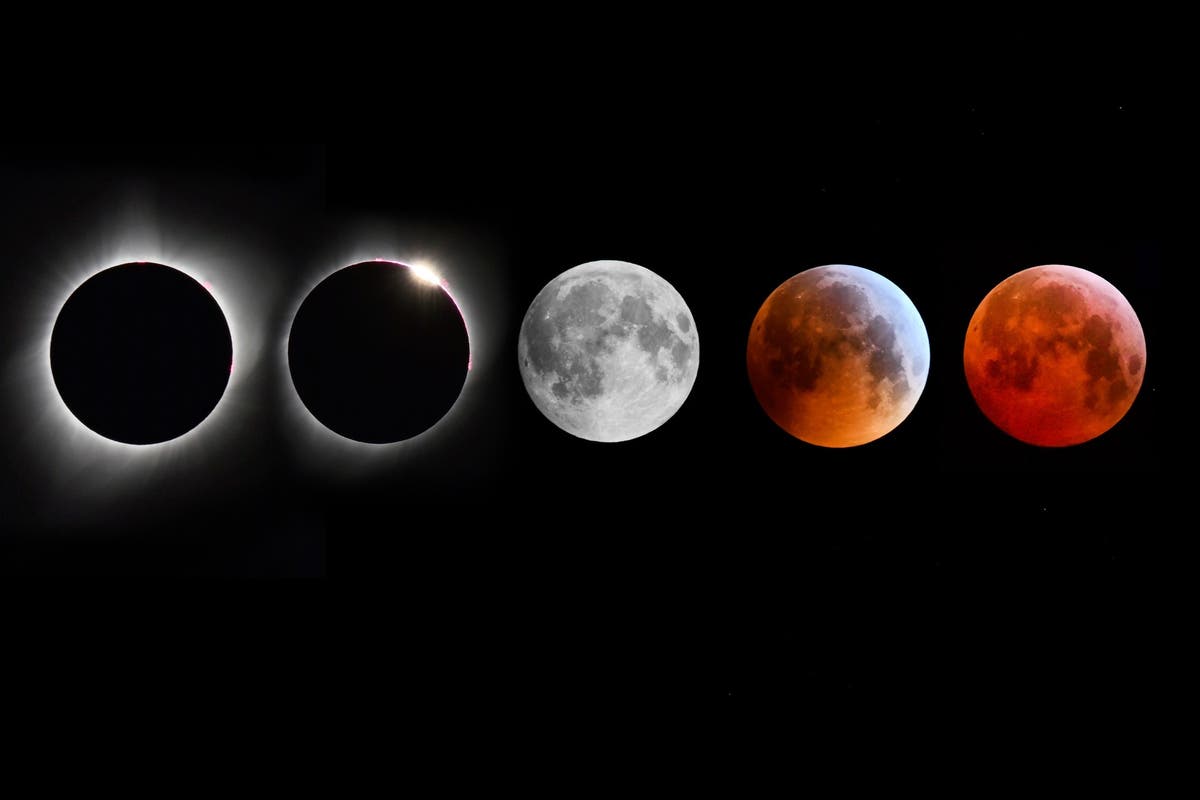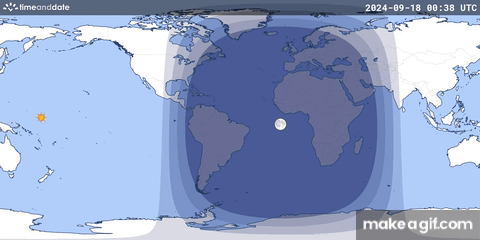A partial lunar eclipse will coincide with a supermoon next week in a remarkable celestial coincidence that will be visible throughout most of the world.
On the night of 17-18 September, the Earth will pass between the Sun and the full Moon, casting its shadow across the lunar surface.
The spectacle will be visible throughout Europe and Africa, as well as across large parts of Asia and North and South America, with the Moon appearing bigger and brighter as it reaches its closest approach to Earth of 2024.
“On the evening of Tuesday, 17 September (the evening of the full Moon), as twilight ends, the rising Moon will be 11 degrees above the east-southeastern horizon with Saturn to the upper right at 14 degrees above the horizon. Later in the evening the partial shadow of the Earth will cover a small upper part of the Moon,” Nasa notes on its website.
“The Moon will start entering the partial shadow of the Earth at 8:41 pm EDT (1:41am BST on Wednesday). The slight dimming of the Moon will be difficult to notice until the top edge of the Moon starts entering the full shadow at 10:13 pm. The peak of the eclipse will be at 10:44 pm with just the top 8.4 per cent of the Moon in full shadow. The Moon will finish exiting.”
A live stream of the partial lunar eclipse will be available through Time and Date’s YouTube channel for anyone living outside of the event’s path or who do not have clear skies.
The full Moon will have a slight red tint as it passes through Earth’s shadow, as the light from the Sun will be passing through Earth’s atmosphere.
“A lunar eclipse occurs at full Moon, and when the shadow of the Earth falls on the Moon. The Earth’s shadow as viewed from the Moon is actually much bigger than the Moon itself, so a lunar eclipse can last a long time and be seen by a whole hemisphere on the Earth,” Don Pollacco, a professor of physics at the University of Warwick, told The Independent.
“The shadow of a planet produces an umbral and penumbral shadow depending on the location of the planet and the Sun. The darkest eclipses occur when the Moon moves through the Earth’s umbral shadow.
“A penumbral eclipse occurs as the moon moving through the penumbral shadow of the Earth. In these cases, the darkening of the moon is usually quite difficult to spot, as some of the Moon is still being illuminated by the Sun.”


